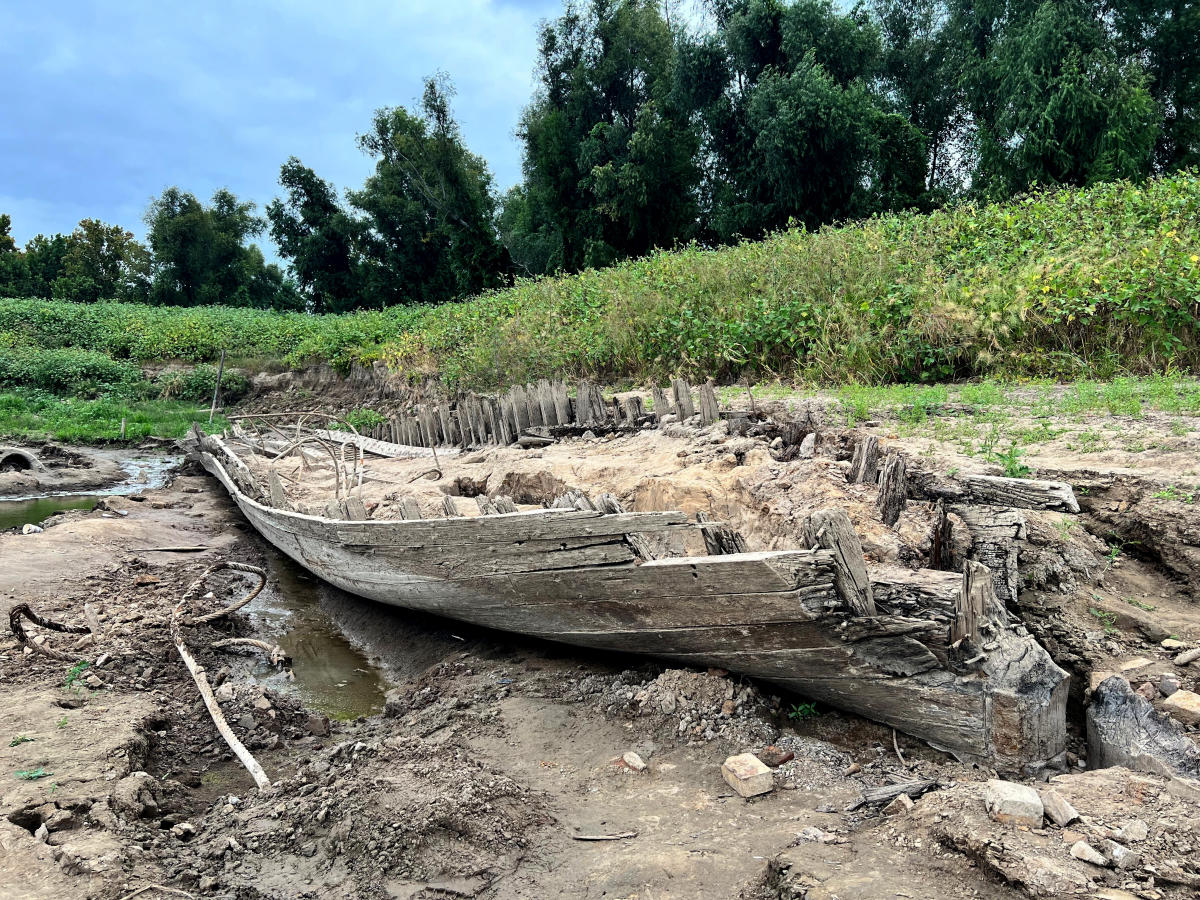BATON ROUGE (AP) — A shipwreck has formed along the banks of the Mississippi River in Baton Rouge, Louisiana, as water levels plummet — threatening to reach record depths in some areas.
The ship, which archaeologists believe to be a ferry that sank in the late 1800s to early 1900s, was spotted earlier this month by a Baton Rouge resident walking along the coast. The discovery is the latest to surface through ebb and flow caused by drought. During the summer, receding waters in the Lake Mead National Recreation Area revealed several skeletal remains, numerous dried-out fish, a graveyard of forgotten boats, and even a sunken World War II vessel that once inspected the lake.
“Eventually, the river will come back up and (the ship) will go underwater again,” said Chip McGimsey, the Louisiana state archaeologist, who has been examining the wreckage for the past two weeks. “That’s part of the reason we went to great lengths to document it this time — because next time she might not be there.”
McGimsey believes the ship may be the Brookhill Ferry, which likely transported people and horse-drawn wagons from one side of the river to the other — before major bridges spanned the mighty Mississippi. Newspaper records indicate that the ship sank in 1915 during a severe storm.
But this isn’t the first time the low water levels have revealed the ship. McGimsey said small parts of the ship were uncovered in the 1990s.
“At that time the ship was completely full of mud and there was mud everywhere so only the very tops of the sides were visible so (archaeologists) really didn’t see much else. They had to move a lot of dirt just to get in some narrow windows to bits and pieces,” McGimsey said.
Today, a third of the boat, which is 29 meters long, is visible on the muddy shoreline near downtown Baton Rouge.
McGimsey expects more discoveries as water levels continue to fall, having already received calls about two more possible shipwrecks.
But unusually low water levels in the lower Mississippi, where normal rain has been falling since late August, has also led to chaos — leaving barges trapped in mud and sand, leading to Coast Guard restrictions on waterways and disruptions. river travel for shippers, pleasure boats and cruise line passengers.
In Baton Rouge, the river rests about 1.5 meters deep, according to the National Weather Service — the lowest level since 2012.
Water levels are expected to fall further in the coming weeks, dampening economic activity in the region and potentially threatening jobs.

